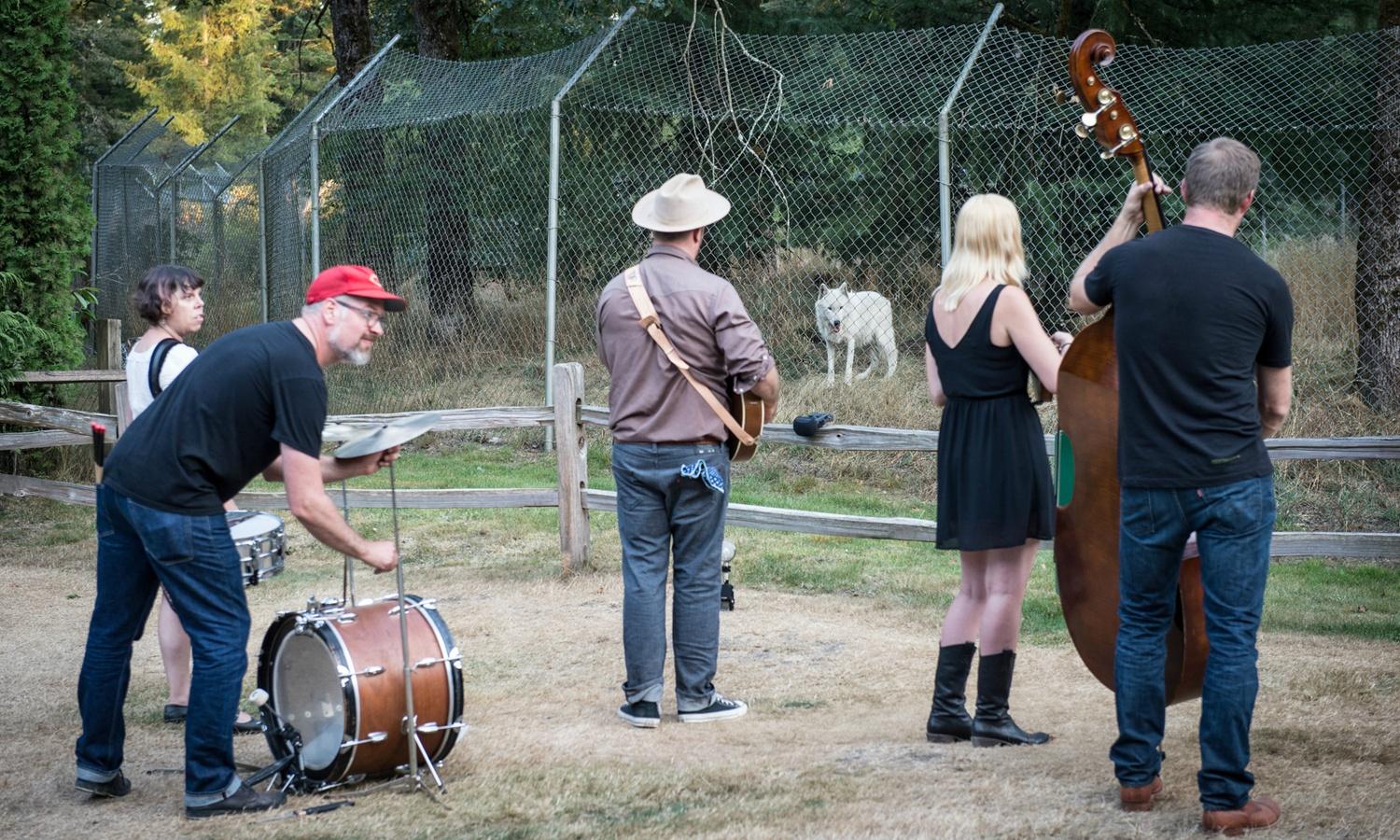Making Music For Animals
Laurel Braitmanis a historian of science and the author of Animal Madness: How Anxious Dogs, Compulsive Parrots, and Elephants in Recovery Help Us Understand Ourselves. She’s particularly interested in animals held in captivity. “If their minds aren’t stimulated and challenged they can end up with all sorts of disturbing behaviors,” she explains. Braitman wondered if music — so often soothing to people, but usually foisted on animals without their permission — could help counter animal anxiety and depression?
This question led Braitman to arrange a series of concertsfor all-animal audiences, such as gorillas in a Boston zoo and a small herd of bison in Golden Gate Park. Recently, the bluegrass band Black Prairie played for the residents of Wolf Havenwolf sanctuary in Tenino, Washington. Many of the animals were rescued from a roadside attraction where they were chained, unable to run or socialize. As the music played, the fifty-two wolves that made up the audience pricked up their ears and moved in for a better view. But can we say that they liked it?
Marc Bekoff, professor emeritus of ecology and evolutionary biology at the University of Colorado, says that science of animal psychology has come a long way, citing the use of MRI machines on dogs, in particular. But, he contends, old-fashioned observational methods are still valid: if an animal scratches excessively, or moves its head warily, it’s a good bet there’s something on its mind.
Some of the experiments depend on observing whether animals move toward or away from speakers playing different types of music, in controlled experiments. Dr. Charles Snowdonof the University of Wisconsin is using that approach in collaboration with a composer, David Teie, to create music that can be shown to attract certain species. They base their approach on sonic frequencies the animals use in nature. Their music for domestic cats features tempos of purring or suckling kittens; the small monkeys called cottontop tamarinds, on the other hand, got music that sounds remarkably like nails on a blackboard. “It is pretty godawful if you ask me,” Snowdon admits, “but the tamarinds dig it.”
Bekoff points out an intriguing aspect of the research on animal appreciation of music. Canids and many other animals have extremely keen hearing, so they are perceiving “overtones and sounds that we do not hear, and can’t even begin to appreciate.” Perhaps they like music more than we do.
Laurel Braitman’s concerts are not controlled experiments — but she never provides food, which would complicate her observations. She’s happy to trust casual observation that at the wolf concert, many of the animals stuck to the edge of their enclosures, close to the band. “The only indicator I have is that they didn’t leave,” she says. “And in fact, that’s how a lot of musicians judge the success of their shows — did people not leave?”
This story is part of thePRX STEM Story Project, made possible by the Alfred P. Sloan Foundation.
Video: Black Prairie plays for wolves
